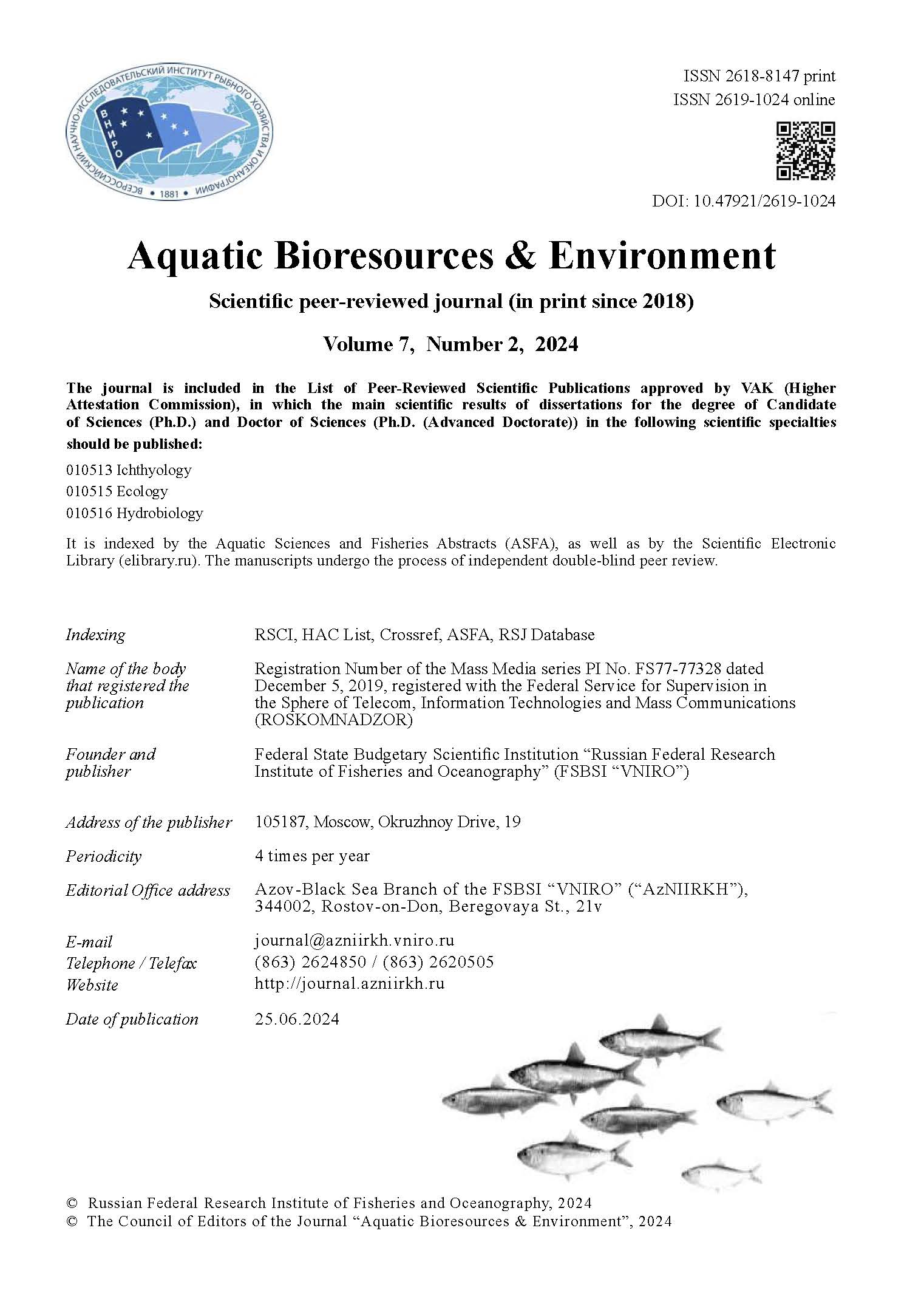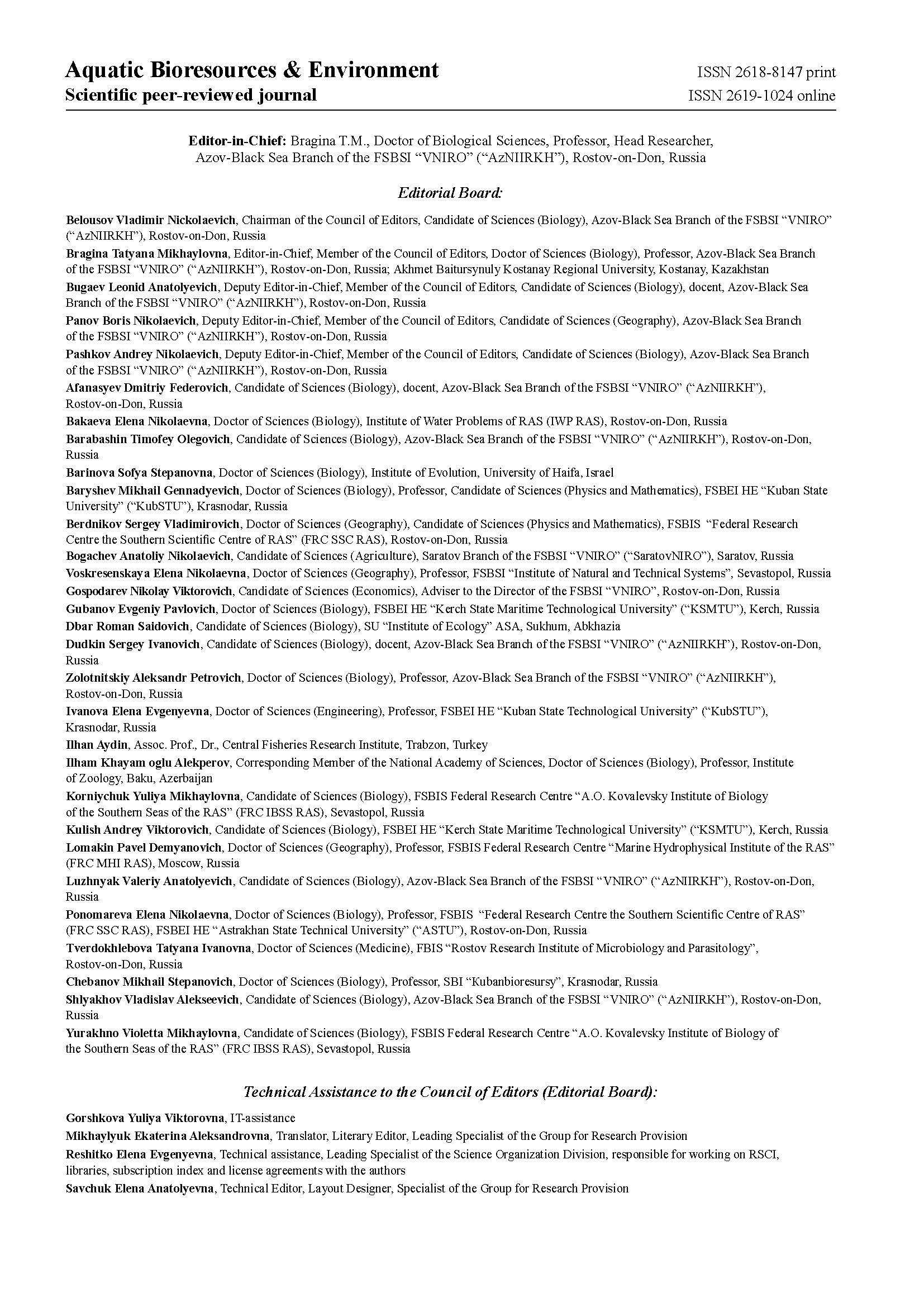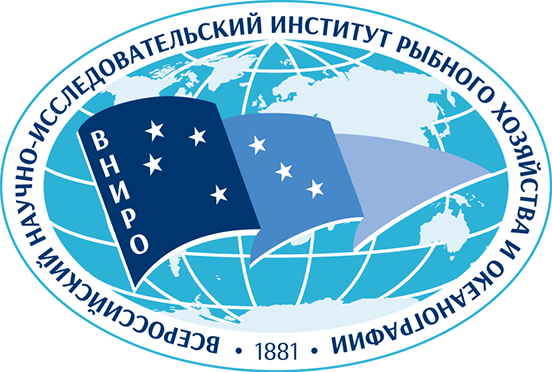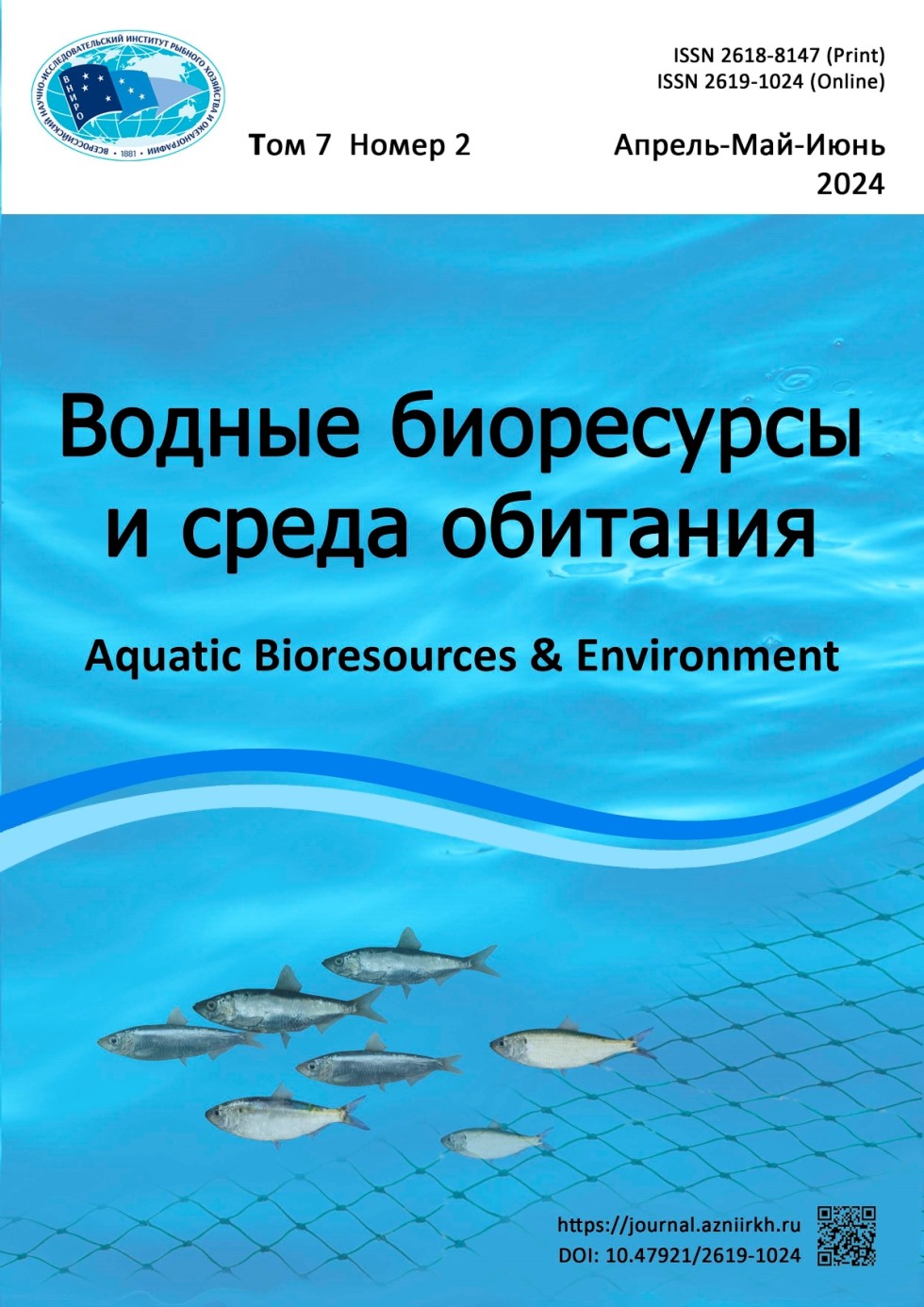

CONTENT
Volume 7 Number 2 2024
Environmental Concerns and the State of Aquatic Environment
Seasonal dynamics of the water chemical composition for the Irtysh River within the Omsk Region
Zharkova N.N., Bazhenova O.P., Gavrilchenko O.L., Boltovskaya A.S.
Abstract
Background. The Irtysh is a large transboundary river flowing through the territory of three countries: China, Kazakhstan, and Russia. This river is crucial for the economic activity of the population of all these countries and is subjected to heavy anthropogenic pressure, including pollution by industrial wastewater and runoff from watersheds. Relevance. Monitoring of the Irtysh River water quality is an essential task, which importance is driven by the need for the assessment of its environmental status in the context of increased anthropogenic impact and global warming, as well as by the necessity for identification of common patterns in the changes of the water chemical composition of transboundary rivers. The aim of this research is to study the seasonal dynamics of the chemical composition of the Irtysh River water within the territory of the Omsk Region. Methods. This work is based on the data obtained through hydrochemical analysis using the conventional methods; the samples were collected along the entire stretch of the Irtysh River within the Omsk Region from May to October 2023. Results. Exceedance of the average monthly values of maximum permissible concentrations (hereinafter referred to as MPCs) for the water bodies used for fisheries has been identified for several parameters: up to 1.5 times for suspended solids, up to 1.4 times for BOD , and up to 5.0 times for PO 3- (based on P). The average monthly concentrations of ammonium nitrogen, petroleum products and phenols did not exceed the prescribed values. Conclusion. The content of easily oxidizable organic matter (based on BOD5) and biogenic elements in the water of the Irtysh River within the Omsk Region has a pronounced seasonal variation; the highest values have been observed in spring and autumn, and the lowest values have been recorded during the summer low water period.
Keywords: hydrochemical parameters, seasonal dynamics, Irtysh River, Omsk Region
Biology and Ecology of Aquatic Organisms
Distribution and ecological features of the mollusс Hydrobia acuta (Draparnaud, 1805) off the coast of Crimea
Makarov M.V., Kopiy V.G.
Abstract
Background. The distribution of the gastropod mollusc Hydrobia acuta in relation to seasons, temperature, depth, salinity and biotopes along the Crimean coast from Karkinit Bay to the Cape Kazantyp for the period from 2001 to 2023 has been considered. This species is abundant and wide-spread in the Black and Azov Seas; however, there have been no papers dedicated to it specifically since 1976. Some biotopes, in particular the epiphyton of some Chlorophyta, have not been previously investigated. It contributes to the relevance of this work, which is aimed at providing the summary of the data on the ecology of H. acuta. Sampling was carried out according to the generally accepted benthic methods with special consideration for the biotopes. According to the results, this mollusc was the most abundant (39,625 ind./m2) in the Crimean coastal area at the mouth of the Chernaya (Black) River on loose substrates in August 2011, and its highest biomass (28.48 g/m2) was recorded in the same area and substrate in September 2022. On macrophytes, the highest abundance and biomass were recorded in the associations of algae Cladophora sp.+Chaetomorpha sp. in the Kazantyp area in July 2009—23,333 ind./kg and 23.33 g/kg, respectively. The conclusion is that the mollusc H. acuta is distributed along the Crimean coast non-uniformly; it has been found to prefer silty bottoms and thickets of green algae, shallow-water sites at the heads of bays and in Karkinit Bay itself (sometimes with increased salinity), as well as in the river estuary (mostly with reduced salinity).
Keywords: species, abundance, biomass, biotope, distribution
On the matter of the assessment of the Antarctic krill Euphausia superba exploitable stocks in the Antarctic Peninsula area based on the trawl catch data from the commercial fishing vessels
Korzun Yu.V., Kukharev N.N., Zhuk N.N., Kriskevich L.V.
Abstract
Background. The assessment of the density and total biomass of the Antarctic krill aggregations has been conducted based on the commercial catches by the fishing and krill harvesting trawlers (supertrawlers) “Konstruktor Koshkin” (“Design Engineer Koshkin”) in 2006 and “More Sodruzhestva” (“Commonwealth Sea”) in 2017 in the Bransfield Strait (FAO Subarea 48.1). Relevance. Recommencement of the Russian krill harvesting necessitates timely strategical characterization of the krill aggregations with regard to their prospective exploitation. This work is aimed at the identification of the density and biomass of the Antarctic krill aggregations in 2006 and 2017, which have been calculated by the volumetric (net) method based on the catches by the commercial vessels in the Bransfield Strait. Methods. A midwater rope trawl of the 74/600 m design with the mesh size 20 mm in the krill-targeting insertion was used as a fishing gear. Estimation of the biomass was done using the isoline method. The catchability coefficient was considered to be 1. Mapping of the biomass density values was conducted with Golden Software Surfer 9 and QGIS 2.18.16. Confidence intervals for the average variation were calculated with 95 % probability. Results. The decrease in the average density of the krill biomass at the harvesting sites in the Bransfield Strait in 2017 (18.0±0.23 g/m3) as compared to 2006 (32.5±0.40 g/m3) has been identified; it resulted from the krill aggregations scattering over the increased area. The total krill biomass in the aggregations in 2006 and 2017 was 2678.3±65.07 thousand t and 2743.1±68.70 thousand t, respectively. Conclusion. Based on the commercial trawl catches, the volumetric method allows for the expedient estimation of the density and biomass of the krill aggregations with the size composition optimal for their exploitation. Taking into consideration that the commercial trawls capture the relatively large-sized krill preferred by the krill-dependent predators, the volumetric method makes it possible to estimate the volume of their food reserves. Exploitable krill stock in the aggregations in the Bransfield Strait in 2017 remained virtually unchanged as compared to that of 2006 and amounted to 2.7 million t.
Keywords: Antarctic krill, biomass, distribution, midwater rope trawl, aggregation density
Ichthyoplankton of coastal waters of the Southeastern Crimea during the summer spawning season of 2023
Petrova T.N.
Abstract
Background. The last systematic studies of ichthyoplankton in the coastal waters of Southeastern Crimea were carried out 30 years ago. However, despite the high importance of this aquatic area for fish reproduction, the current data on it remain extremely scarce. Relevance. Monitoring surveys of ichthyoplankton carried out by the Karadag Biological Station make it possible to analyze the current state of ichthyoplankton complexes and predict the success of recruitment to the natural fish populations. The aim of this article is to analyze the data obtained during monitoring studies of ichthyoplankton in the coastal waters of Southeastern Crimea during the summer spawning season of 2023. Methods. Ichthyoplankton samples were collected in May–September 2023 in the coastal waters along the south- eastern part of the Crimean Peninsula over a depth of 3 to 20 m. Fifteen expeditions were carried out in the aquatic area of the Karadag Nature Reserve, in Tikhaya (Quiet) Bay and Lisya (Fox) Bay. Results. Eggs and larvae of 30 fish species belonging to 20 families have been identified. The average number of eggs was 145.9 pcs./100 m3, and for larvae it was 15.1 ind./100 m3. Species similarity index for the summer ichthyoplankton in 2020 and 2023 was 0.79. Diversity indices in 2023 decreased by an average of 1.2 times compared to 2020 due to the pronounced dominance of anchovy, which had not been previously observed. Conclusion. The highest number of species (28) was recorded in the coastal waters of the Karadag Nature Reserve: the abundance of eggs was 153.2 pcs./100 m3, and the abundance of larvae was 12.0 ind./100 m3. The lowest number of species (14) was observed in Tikhaya (Quiet) Bay: the abundance of eggs was 113.0 pcs./100 m3, and the abundance of larvae was 7.7 ind./100 m3. In the samples, the eggs of Engraulis encrasicolus (52.0 %) and Mullus barbatus (20.6 %) prevailed. Among larvae, the most prevalent were those of anchovy (46.4 %) and hatched from demersal eggs of Chromis chromis, as well as the fish species belonging to the families Gobiidae, Blenniidae, and Labridae (40.2 %).
Keywords: ichthyoplankton, summer spawning season, species diversity, abundance, coastal waters, Karadag, Crimea, Black Sea
Ichthyofauna of Marine and Inland Water Bodies
Abstract
Background. The change in external conditions is accompanied by various responses of organisms existing in an unstable and heterogeneous environment. Relevance. Under the influence of physico- chemical factors of the aquatic environment, the frequency and extent of asymmetric manifestations of bilateral morphological features in fish individuals may increase, which is a consequence of an imbalance in their development and reflects the level of environmental stress. The aim of this work was to examine the fluctuating asymmetry (FA) in the number of pores in the head seismosensory canals of belica Leucaspius delineatus (sunbleak) from the water bodies that differ in the content of total dissolved solids (water mineralization) and hardness cations. Methods. Ichthyological material was collected in nine small ponds belonging to the Kama River basin in the Udmurt Republic in 2018–2019. In the captured individuals of belica, the number of pores in the seismosensory canals in four paired head dermal bones has been identified, on the basis of which two FA indices have been calculated. Results. In several water bodies, a considerable proportion of belica mature individuals with incompletely ossified sections of the head seismosensory canals, often on one side only, or on the both sides but to different extents, has been recorded. This proportion determined the FA indices of the studied seismosensory features and had a positive correlation with the content of magnesium ions in the water bodies. In the belica individuals with fully ossified head seismosensory canals, the FA variance of the total number of pores in these canals had a positive correlation with the total dissolved solids in the water of the investigated small ponds; however, it had not depended on the content of hardness cations in them. Conclusion. The possible mechanisms of the influence of the investigated hydrochemical factors on the morphogenetic processes sequentially occurring in the belica early development—anlage of the raws of primary head neuromasts in its larvae and the subsequent formation of the ossified sections of the head seismosensory canals in its fry—are discussed. Keywords: Leucaspius delineatus, belica, fluctuating asymmetry, seismosensory canals, ponds, water mineralization, hardness cations
Fisheries and Processing of Aquatic Bioresources
On the possibility of using the industrial fishing gears and techniques for jellyfish harvesting in the Azov and Black Sea Basin
Stafikopulo A.M., Andronov V.A., Vtyurina N.V., Gorbatyuk Ya.I.
Abstract
Background. In the recent years, considerable development and formation of large aggregations of scyphozoans, namely barrel jellyfish Rhizostoma pulmo and moon jellyfish Aurelia aurita, has been observed in the Azov and Black Sea Basin. Relevance. Due to the drastic increase in the biomass of these gelatinous aquatic animals and their negative impact on various economic activities, currently the most prospective approach to reducing jellyfish abundance is their harvesting for the further processing (for various purposes) or amelioration of the environment (including their extermination). This article is aimed at consideration of the main jellyfish harvesting techniques and gears used in the world fisheries and by the Russian Federation, as well as experimental designs developed in the USSR; it is also aimed at the assessment of the possibility of applying the fishing gears and techniques used in the Azov and Black Sea Fishery Basin for exploitation of other species of aquatic living resources to the jellyfish harvesting. Methods. The article references publications, informational materials, scientific reports, as well as the statistical data collected by the FAO and Federal Agency for Fishery (Rosrybolovstvo) on the global catches of jellyfish, including the data collected during applied research undertaken in 2023. Based on these materials and the data on the fishing operations in the Azov and Black Sea Basin amassed by the authors, the prospects of using industrial methods and commercial fishing gear for jellyfish harvesting (extraction) in the Azov and Black Sea Basin have been considered. Results. The fishing gears that are most promising for jellyfish harvesting have been identified, both coastal ones (pound nets) and used off the board of a fishing vessel (trawl, elongated purse seine, and lampara net). Conclusion. The provided data make it possible to outline the prospective approaches to jellyfish extraction in the Azov and Black Sea Basin.
Keywords: jellyfish, moon jellyfish, barrel jellyfish, Azov Sea, Black Sea, industrial fishing, coastal fishing, fishing gear, pound nets, trawl, vessel types
Informational Messages
More than half a century of service to science (on the anniversary of Doctor of Biological Sciences, Professor T.M. Bragina)
Zharlygasov Zh.B., Baubekova G.K., Rulyova M.M., Zeinelova M.A.
Abstract
On February 26, 2024, Tatyana M. Bragina, Doctor of Biological Sciences, Professor of the Akhmet Baitursynuly Kostanay Regional University, Chief Researcher of the Azov-Black Sea Branch of the Russian Federal Research Institute of Fisheries and Oceanography, Editor-in-Chief of the peer-reviewed scientific journal “Aquatic Bioresources and Environment” celebrated her anniversary. Tatyana M. Bragina started her career at the Naurzum State Nature Reserve, where she was working as a Deputy Director for Science for more than 17 years. T.M. Bragina has made an invaluable contribution to the study and preservation of the biological diversity of Kazakhstan. She initiated numerous environmental concervation and research projects and was in charge of many multidisciplinary scientific expeditions. Based on the results of these studies, the certification of the primary lake systems of a major part of Northern Kazakhstan has been carried out, several specially protected natural areas have been created, and five out of ten Ramsar sites of the Republic of Kazakhstan have been recognized as wetlands of international importance. A special role in the professor’s work was played by educational activities and by the development of a network of specially protected natural areas. Tatyana M. Bragina and her colleagues have also made a crucial contribution to creation and development of the scientific journal “Aquatic Bioresources & Environment”.
Keywords: anniversary, Tatyana M. Bragina, science, biological diversity, specially protected natural areas, biological resources



